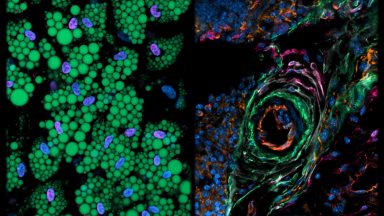Easy access to large amounts of fast or processed foods that are high in fat or sugar has led to a rapid rise in obesity, reaching pandemic levels. While obesity is not a disease per se, it has been linked to many co-morbidities such as diabetes, cardiovascular disease and even cancer. This in turn has forced the scientific community to revisit the physiological importance of adipose tissue, realizing that its function goes well beyond its insulating and cushioning properties. Indeed, we now recognize not only its biomechanical and insulating roles but also its key involvement in systems metabolism & physiology, tissue growth, regeneration and repair, as well as innate immunity. While all of us can easily locate our respective fat layers and clearly recognize the biomedical importance of studying adipose biology, it may come as a surprise that we still have a relatively poor understanding of how adipocytes are formed, both in terms of their respective stem / precursor origin and the structure and function of adipogenic regulatory networks.
Since its start back in 2007, one of the major research topics in my lab has therefore been to engineer new technologies that can improve our ability to uncover the molecular mechanisms underlying fat cell differentiation with a specific focus on elucidating the regulatory factors and networks that mediate the formation of mature fat cells. Little did we know then that this quest would take us well beyond the mapping of adipogenic regulatory networks alone. Indeed, driven by new revolutionary single cell omic methods, we have recently ventured into resolving adipose stem cell and precursor heterogeneity. This has already allowed us to uncover a new cell type that may well fundamentally change our view of how adipose tissue development and homeostasis is controlled, which has broad implications in terms of better understanding the pathological consequences of obesity.

To know a bit more about you…
-
What is your best culinary memory?
Perhaps my first culinary memory is that of beef cow in madeira sauce. This is a very traditional dish in the region in Belgium where my grandparents lived as it is typically served on special holidays as well as funerals. Since we tended to visit my grandparents often on exactly these days, I remember having it served quite frequently and loving it. It’s not a dish, especially the meat, that many people will naturally veer toward, but if cooked well, I highly recommend it. And perhaps one more, the first time I had a chance to savor the quintessential dish “moules frites” with a good Belgian beer, thus the whole package, was a sheer delight. Until today, I make a point of ordering it every time we revisit the North Sea coast. Delicious!
On a serious note, we all know that food systems are under pressure…
-
As a consumer, is there any particular point that stands out to you in the current food systems?
The consequences of climate change are increasingly all around us, so we need better ways to alert customers about the ecological impact of developing the foods that are available in the supermarket. We currently already have a NutriScore which informs the customer on how healthy (or unhealthy) certain foods are based on the energy, sugar, saturated fatty acids etc. foods contain (the higher, the lower the score). While certainly not perfect, it at least tries to convince the customer to make more healthy food choices. Similarly, it may be valuable to implement an eco-score for example based on how much CO2 has been emitted when producing and transporting foods, how much water was used to grow fruits / vegetables etc. I have read somewhere that this is being researched and I would certainly incorporate such a score in my overall selection, especially since such information is currently difficult to retrieve while shopping. I fear however that one of my favorite fruits, avocado (and guacamole), might receive a bad eco-score, but perhaps I will allow myself one exception ?